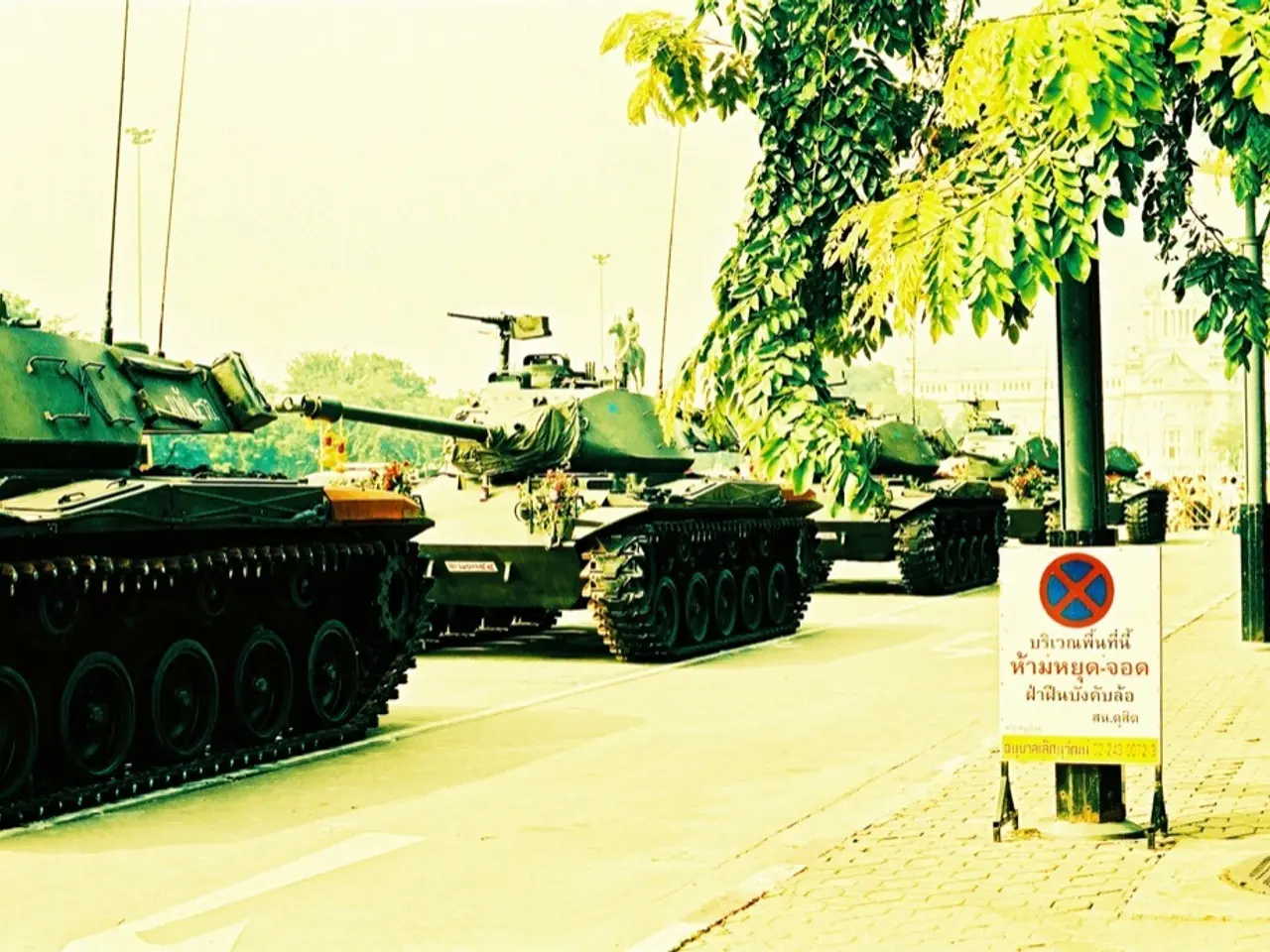Military Personnel from the 82nd Airborne Division in the United States learn from their deployment to Europe in Poland, sharing insights and experiences.
In February 2022, thousands of paratroopers from the 82nd Airborne Division were deployed to Poland, marking a significant moment in the ongoing efforts to deter Russian aggression in Eastern Europe.
The mission, known as Operation European Assure, Deter, and Reinforce, was aligned with the European Deterrence Initiative (EDI), a U.S. programme aimed at enhancing military presence and readiness in Europe. The deployment was crucial in strengthening NATO's eastern flank, demonstrating a commitment to allies like Poland, and building joint readiness and interoperability with host nation militaries.
The 82nd Airborne Division's presence in Poland signified a resolve and unity within NATO, reinforcing deterrence by showing the willingness of the U.S. and allies to operate forward in contested environments. The division worked alongside Polish allies, fostering trust and operational integration, essential for collective defense.
Logistics played a significant role in the deployment, enabling rapid deployment and building combat power. The lack of an established Army supply chain was a challenge, and the brigade had to design and stand up the flow of water, food, fuel, and parts to maintain readiness and support training with Polish allies.
The logistics civil augmentation program (LOGCAP) improved the overall quality of life for paratroopers by providing life support assets. The field maintenance company, responsible for pass-back maintenance and unique capabilities like fabrication, welding, and repair of communications and electronic missile systems, played a crucial role in supporting any unit that required assistance across the brigade.
The analytical framework PMESII-PT was used by intelligence personnel in the brigade S2 team to understand the foreign environment of Poland. Interoperability was not just about strategic objectives, but also about the exposure of NATO allies working together, as demonstrated by the division working alongside Polish allies.
The success of the deployment was largely due to the dedication and hard work of the paratroopers involved. The Army prioritises people, and this deployment was no exception. The achievement of objectives over the entirety of Ukraine, a country similar in size to Texas, was a monumental challenge, especially in the face of resistance.
The deployment of the 82nd Airborne Division to Poland was the first time a paratrooper from the division had set foot on the European continent during a period of such tension in over seventy-five years. The event was reported on by global media, with coverage highlighting a massive military convoy composed of armoured vehicles outside Kyiv, emphasising the tyranny of distance faced by Russian forces.
In a broader European context, experts emphasise the importance of continued forward deployments, multinational exercises, and equipment modernization as key to sustaining credible deterrence against Russia. The positive reception and cooperation with Polish allies underscore the importance of allied partnerships as a foundation for successful deterrence.
While precise operational lessons from the 2022 deployment itself remain sparse in public domain sources, the deployment of the 82nd Airborne Division to Poland was an integral part of NATO’s deterrence posture efforts in Poland and Eastern Europe. The strategic value of presence and rapid deployment capabilities, the vital role of multinational cooperation and joint training, and the necessity of maintaining and enhancing conventional and precision strike capabilities for deterrence credibility are likely lessons drawn from such a deployment.
As General George S. Patton once said, "A good plan violently executed now is better than a perfect plan next week." Planning is crucial for successful execution, a lesson that was undoubtedly applied during the 82nd Airborne Division's deployment to Poland.
- The deployment of the 82nd Airborne Division to Poland was a strategic move aligning with the European Deterrence Initiative (EDI), enhancing military presence and readiness in Europe, particularly aimed at deterring Russian aggression in Eastern Europe.
- The logistics challenge during the operation required the division to design and stand up the flow of essential supplies to maintain readiness and support training with Polish allies, emphasizing the importance of logistics in complex military deployments.
- The success of the deployment relied heavily on the joint readiness and interoperability with host nation militaries, with intelligence personnel utilizing the analytical framework PMESII-PT to understand the foreign environment of Poland and foster operational integration.
- In the realm of politics and general news, experts highlight the importance of continued forward deployments, multinational exercises, and equipment modernization in maintaining credible deterrence against Russia, reiterating the significance of allied partnerships as a foundation for successful deterrence.







